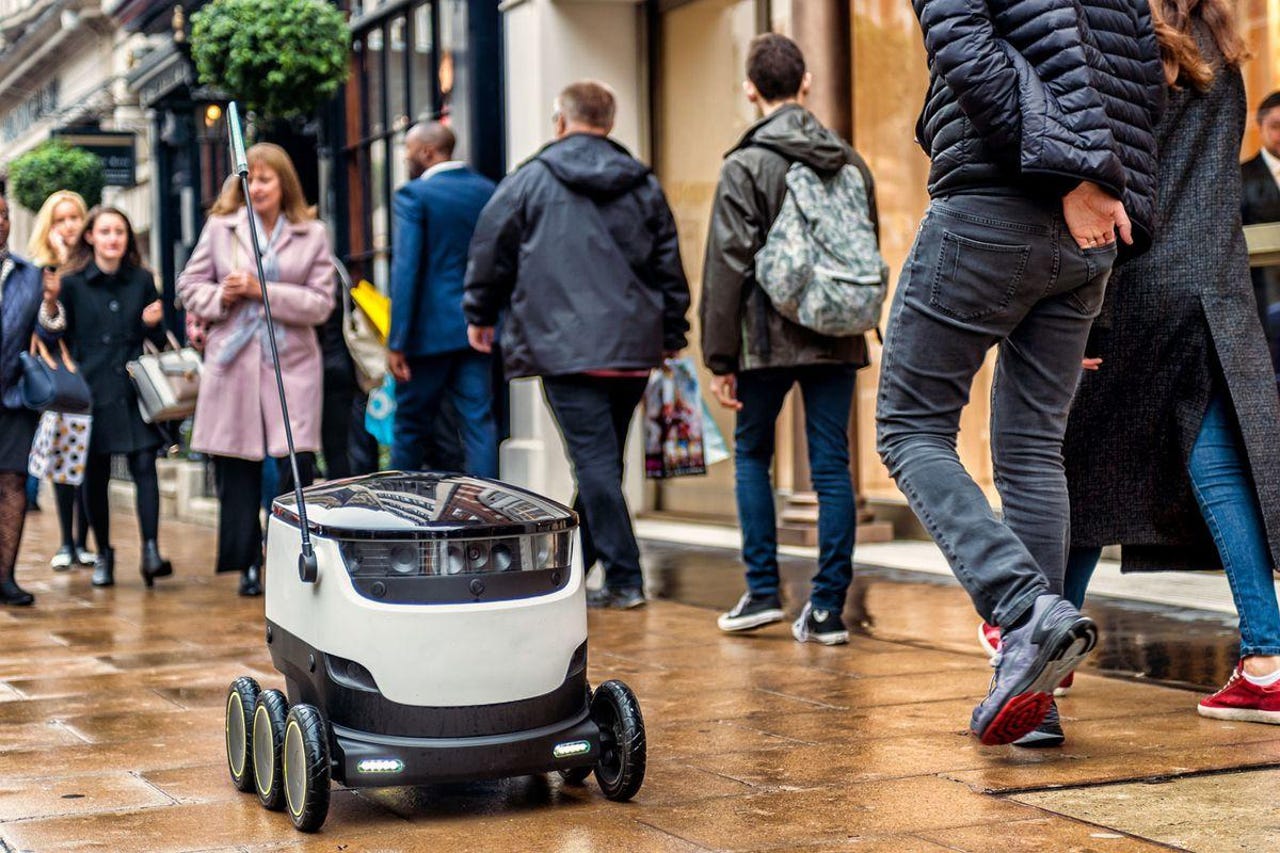These figures confirm what people think about robot delivery


Usage data from a leading provider of delivery robots suggests the pandemic has been a boon to automation. Starship Technologies, which has been operating commercially for three years in limited pilots and in settings like college campuses, has announced that its deliveries since the beginning of the pandemic have quadrupled globally.
The last year has been a kind of hothouse for automation firms, who have seen their technologies' adoption grow quickly in a world that values sterile interactions and shopping at home like never before. If that sounds dystopian to you, it won't help to add that some of the biggest beneficiaries of the pandemic seem to be robots and AI, particularly in sectors like delivery and logistics.
"This past year has been a game changer for autonomous delivery, moving adoption ahead by years," said Ahti Heinla, Co-founder and CEO of Starship Technologies. "When we launched commercial delivery three years ago, we didn't expect to be at the point we are today. We marked the significant milestone of one million deliveries in January 2021 and we've since surpassed 1.5 million deliveries. These rapid developments have also helped us scale the business, so we can provide a lower cost of delivery than any other option available."
Starship was quick to carve out a strategy of targeting college campuses, a savvy move that sidestepped murky regulatory stances in many cities on the use of delivery robots on public streets. College campuses are full of hungry customers with centralized food services providers, an ideal testbed for robotic delivery.
The company says it has set delivery records repeatedly over the last year in its campus deployments.
"I hadn't even heard of robot delivery before I started school and now I don't see a future without it," said Claire Sunderman, a student at Bowling Green State University. "I'd be perfectly happy to have a robot deliver a lot more things because it would save me so much time. Now that I am graduating, I will really miss the convenience and seeing the robots on campus everyday -- I wish I could take one with me!"
That sort of attitude bodes well for companies like Starship, which aren't just proofing technology but also training a new generation of adopters. But for widespread adoption to occur, automation firms still need to tackle the thorny issue of local regulatory hurdles. So far, companies like Starship (either out of prudence or because they don't have deep enough pockets) have avoided the blitz mentality of Uber and Bird, which left local regulators scrambling to react, and have opted instead for a more methodical rollout.
The pandemic, which has changed attitudes about convenience and delivery nationwide, may be the opening these firms have been waiting for.